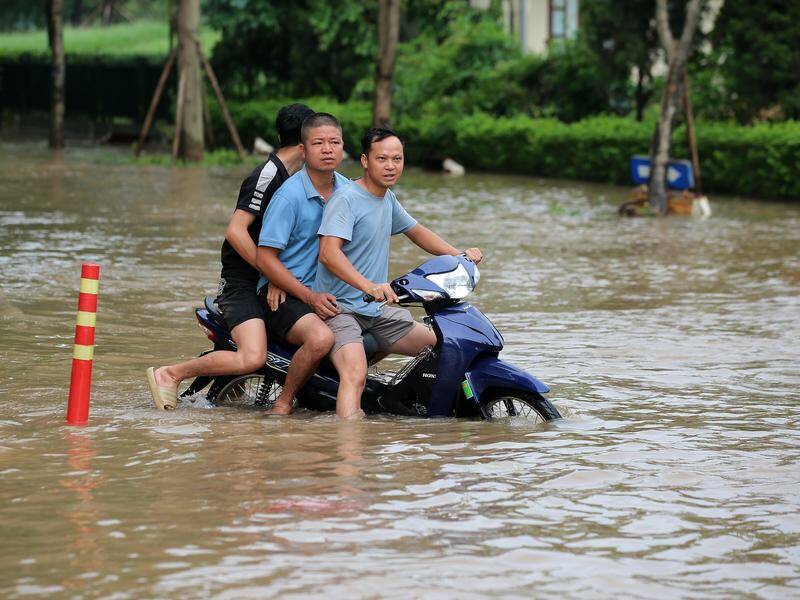Typhoon Matmo has unleashed torrential rains across northern Vietnam, causing widespread flooding, with the capital city, Hanoi, severely impacted. Streets have transformed into rivers, vehicles are stranded, and emergency services are working to manage the growing crisis.
Impact on Daily Life and Infrastructure
The heavy downpours have led to the temporary closure of several schools and disrupted public transportation, leaving commuters stranded. Noi Bai International Airport, Hanoi’s main airport, has experienced flight delays and cancellations due to adverse weather conditions. Urban drainage systems have struggled to handle the volume of rainfall, exacerbating flooding in low-lying areas.
Emergency Response Measures
Local authorities have deployed emergency teams to assist residents, secure critical infrastructure, and mitigate damage. Citizens have been advised to avoid non-essential travel, especially in flood-prone areas, and to take precautions against potential power outages and property damage.
Weather Warnings and Outlook
Meteorologists continue to issue warnings for additional heavy rainfall as Typhoon Matmo moves through the region. Officials caution that the storm season is ongoing, with more typhoons and heavy rainfall expected in northern Vietnam in the coming weeks.
Broader Implications
The flooding in Hanoi reflects broader challenges related to urban infrastructure and climate resilience in Southeast Asia. The recurring storms underscore the need for improved drainage systems and disaster preparedness measures to minimize disruptions and protect residents.
As Typhoon Matmo sweeps through northern Vietnam, emergency services remain on high alert, prioritizing citizen safety and maintaining essential services amid worsening weather conditions.

